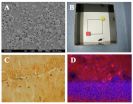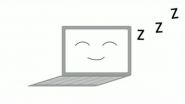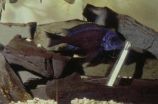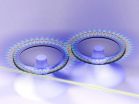Frozen meal eaters have better intakes of key nutrients for fewer calories than QSR eaters
2014-10-20
(Press-News.org) ATLANTA (October 20, 2014) – New data presented today indicate that consumers of frozen meals (1) had higher daily intakes of dietary fiber, potassium, calcium and protein, and lower daily intakes of calories and saturated fat than consumers of quick service restaurant (QSR) meals (2). The poster, Consumption of Frozen Meals as Compared to Quick Service Restaurant Meals is Associated with Better Nutrient Intakes in Adult Participants of The National Health and Nutrition Examination Survey (2003-2010), was presented at the 2014 Academy of Nutrition and Dietetics Food & Nutrition Conference & Expo (3).
"The analysis shows adults (19+ years) who reported eating frozen meals have higher daily intakes of more than 12 important nutrients – including protein, dietary fiber, potassium, calcium, vitamin A, riboflavin, vitamin B6, vitamin C, vitamin E, choline, magnesium and copper – than those who reported eating quick service restaurant meals, and they do it with 253 fewer calories and 2.6 grams less saturated fat a day," said Dr. Victor L. Fulgoni, co-author of the analysis and vice president of Nutrition Impact, LLC.
Those who Report Dining on Frozen Meals Eat Less Calories and Get More Essential Nutrients
Specifically, the analysis revealed that frozen meal consumers, compared to QSR consumers:
Eat 253 fewer calories a day
Eat less saturated fat per day (2.6 grams less saturated fat per day)
Have higher daily intakes of three of the four nutrients the Dietary Guidelines recommends increasing including:
3.9 more grams (16 percent of the daily value) of dietary fiber (18.2±0.5 g/d frozen meal consumers vs 14.3±0.2 g/d QSR consumers); that's as much fiber as one cup of cooked, instant oatmeal
511 more mg (15 percent of the daily value) of potassium (3008±63 mg/d frozen meal consumers vs 2497±20 mg/d QSR consumers); that's as much potassium as a medium banana
135 more mg (14 percent of the daily value) of calcium (1059±43 mg/d frozen meal consumers vs 924±11 mg/d QSR consumers); that's nearly as much calcium as half a cup of milk
Have higher daily protein intakes (90.0±2.2 g/d frozen meal consumers vs 81.5±0.5 g/d QSR consumers) with 8.5 more grams of protein a day; that's as much protein as 1.5 eggs
"This research is further evidence that frozen meals can play an important role in helping Americans obtain key nutrients of concern highlighted in the US Dietary Guidelines while maintaining calorie and fat levels," said Kim Krumhar, Ph.D., Scientific Advisor – Nutrition, Nestlé.
Frozen Meals Are Associated with Better Diet Quality
This abstract is a follow-up to data, Consumption of frozen meals as compared to quick service restaurant meals is associated with better diet quality in adult participants of the National Health and Nutrition Examination Survey (2003-2010), presented at the 2014 Experimental Biology Conference which indicated that people who reported eating frozen meals over QSR have better diet quality and come closer to meeting the Dietary Guidelines recommendations for fruits, vegetables, dark green and orange vegetables, greens and beans, whole grains, and total protein foods.
INFORMATION:
About Nestlé USA
As the world's leading nutrition, health and wellness company, Nestlé is committed to working with nutrition, health and wellness professionals to help consumers enjoy meals they love while also meeting US Dietary Guidelines. Balance Your Plate with Nestlé is an educational program that highlights the important role frozen prepared foods can play in helping Americans meet US Dietary Guidelines and MyPlate recommendations for healthy eating patterns. Frozen, ready-made entrées are a source of pride for Nestlé. They are freshly made and simply frozen. Nestlé cooks prepare a wide variety of frozen dishes with care, making key ingredients – like pasta for our iconic lasagna or macaroni and cheese – from scratch. Then the food is frozen to help lock in nutrients and provide convenience for easy enjoyment at home or at work. The company also works continually to improve the nutritional profiles of its products by featuring positive nutrients such as whole grains, calcium, Omega-3s and antioxidants and by reducing nutrients like fat and sodium. A variety of Balance Your Plate resources and tools for health professionals can be found at nestleusa.com/balance.
The study was supported by Nestlé USA. For more information and links to the Food & Nutrition Conference & Expo scientific abstracts, please visit http://www.andjrnl.org/article/S2212-2672(14)00786-2/abstract.
About the Food & Nutrition Conference & Expo
Each fall, the Academy of Nutrition and Dietetics sponsors the world's largest meeting of food and nutrition experts — more than 10,000 registered dietitians, nutrition science researchers, policy makers, health-care providers and industry leaders attend the annual meeting — and address key issues affecting the health of all Americans. The annual the Food & Nutrition Conference & Expo (FNCE) features more than 100 research and educational presentations, lectures, debates, panel discussions and culinary demonstrations. More than 400 exhibitors from corporations, government and nonprofit agencies showcase new consumer food products and nutrition education materials.
(1) Defined consumption of any of 91 specific frozen meals
(2) Defined as obtaining meals from "restaurant fast food/pizza"
(3) What We Eat In America (WWEIA)/NHANES (2003-2010) data were used to determine associations between nutrient intake in adult (19+yrs) frozen meal consumers as compared to consumers of meals from quick service restaurants. Intake was determined using a 24 hour recall. The NHANES is a cross-sectional study, and the data cannot be used to draw causal relationships. A nutritionally balanced diet and regular exercise are keys to a healthy lifestyle.
[Attachments] See images for this press release:

ELSE PRESS RELEASES FROM THIS DATE:
2014-10-20
Boulder, CO, USA — Ryan McKellar's research sounds like it was plucked from Jurassic Park: he studies pieces of amber found buried with dinosaur skeletons. But rather than re-creating dinosaurs, McKellar uses the tiny pieces of fossilized tree resin to study the world in which the now-extinct behemoths lived.
New techniques for investigating very tiny pieces of fragile amber buried in dinosaur bonebeds could close the gaps in knowledge about the ecology of the dinosaurs, said McKellar, who is a research scientist at the Royal Saskatchewan Museum in Saskatchewan, ...
2014-10-20
New Rochelle, NY, October 20, 2014—When it comes to picking an egg donor, until recent years, recipients tended to prefer someone with a similar appearance. Donor trait choices are changing, though, and which traits are now more preferable and why is the focus of "Beauty, Brains or Health: Trends in Ovum Recipient Preferences," an article published in Journal of Women's Health, a peer-reviewed publication from Mary Ann Liebert, Inc., publishers. The article is available free on the Journal of Women's Health website at http://online.liebertpub.com/doi/full/10.1089/jwh.2014.4792 ...
2014-10-20
Boulder, CO, USA — Venus is hiding something beneath its brilliant shroud of clouds: a first order mystery about the planet that researchers may be a little closer to solving because of a new re-analysis of twenty-year-old spacecraft data.
Venus's surface can't be seen from orbit in visible light because of the planet's hot, dense, cloudy atmosphere. Instead, radar has been used by spacecraft to penetrate the clouds and map out the surface – both by reflecting radar off the surface to measure elevation and by looking at the radio emissions of the hot surface. ...
2014-10-20
This news release is available in Spanish.
Enara Herran, a researcher at the UPV/EHU's Department of Pharmacy and Pharmaceutical Technology, is working to improve the way Alzheimer's and Parkinson's treatments are administered. And it is a fact that, as Herran herself stressed, "both diseases are becoming more and more common in our society".
Both disorders affect the neurones: their structure and function is lost, and this in turn leads to the deterioration in the patient's motor, cognitive, sensory and emotional functions. As Herran pointed out, in many cases ...
2014-10-20
VIDEO:
The Internet "sleeps " -- but not everywhere. Find out why.
Click here for more information.
Researchers studying how big the Internet is have found that it "sleeps," almost like a living creature.
The finding will help scientists and policymakers develop better systems to measure and track Internet outages, such as those that struck the New York area after Hurricane Sandy. Understanding how the Internet sleeps will help them avoid confusing a sleeping Internet with ...
2014-10-20
Fish just want to have fun, according to a University of Tennessee, Knoxville, study that finds even fish "play."
The research is published in the academic journal Ethology and can be viewed at http://bit.ly/1tLunpC.
Gordon Burghardt, a professor in the departments of Psychology and Ecology are Evolutionary Biology, is known for defining "play" in a way that allows us to identify it in species not previously thought capable of play, such as wasps, reptiles and invertebrates.
"Play is repeated behavior that is incompletely functional in the context or at the age ...
2014-10-20
This news release is available in German. Diatoms play an important role in water quality and in the global climate. They generate about one fourth of the oxygen in the Earth's atmosphere and perform around one-quarter of the global CO2 assimilation, i.e. they convert carbon dioxide into organic substances. Their light receptors are a crucial factor in this process. Researchers at the Leipzig University and the Helmholtz Centre for Environmental Research have now discovered that blue and red light sensing photoreceptors control the carbon flow in these algae. These ...
2014-10-20
WASHINGTON, DC – A mass of marine debris discovered in a giant sinkhole in the Hawaiian islands provides evidence that at least one mammoth tsunami, larger than any in Hawaii's recorded history, has struck the islands, and that a similar disaster could happen again, new research finds. Scientists are reporting that a wall of water up to nine meters (30 feet) high surged onto Hawaiian shores about 500 years ago. A 9.0-magnitude earthquake off the coast of the Aleutian Islands triggered the mighty wave, which left behind up to nine shipping containers worth of ocean ...
2014-10-20
Since World War II, more than 45 international human-rights treaties have been signed by many of the world's roughly 200 countries. But why do some states sign such accords, especially if they lack a strong human-rights commitment in the first place?
One prominent idea holds that treaty-ratifying countries are essentially bought off: They agree to lend support to the human-rights movement in exchange for material good, such as foreign aid or more trade. However, a new study co-authored by an MIT political scientist finds that not to be the case; the actions of states, ...
2014-10-20
This news release is available in German. What started out as a mathematical oddity, has now become a new kind of laser technology. Two years ago, physicists at TU Wien predicted a paradoxical laser effect: Under certain conditions, a laser can be switched on not by supplying it with more energy, but by taking energy away from the laser. First experimental signatures of this effect were recently reported at TU Wien. In collaboration with colleagues at Washington University in St. Louis, USA and at Riken, Japan the researchers have now succeeded in transferring the paradoxical ...
LAST 30 PRESS RELEASES:
[Press-News.org] Frozen meal eaters have better intakes of key nutrients for fewer calories than QSR eaters






